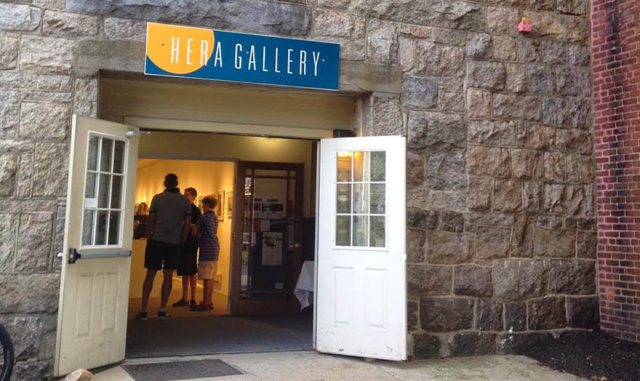
It’s hardly front-page news that the talents of female artists have historically been neglected. Frida Kahlo in the shadow of husband Diego Rivera. Georgia O’Keeffe under the wing of Alfred Stieglitz. So no surprise that on May 30, 1974, it was necessary for the Hera Women’s Cooperative Gallery and Art Center to open its doors in a former laundromat, displaying the work of 10 founding members.
It was one of the first women’s galleries in the country and remains one of the longest lasting. Today there are nearly two dozen members of what has been simplified to Hera Gallery, and half of them are male, indicating either gender equality or no hard feelings, your choice.
The mission statement on their website declares that the artistic collaborative “encourages artists and their audiences to explore contemporary culture, social and aesthetic issues.” And they’ve walked the talk – a recently concluded exhibition, “Water,” merged aesthetic and environmental concerns. There have been readings and dance performances, films and music, and themed art shows on such subjects as the AIDS epidemic and racial identity, homelessness and endangered democracy.
One of the founding members, Roberta Richman, appreciates Hera as a visitor as well as one of the creators. “I love Hera. It made living in this community a much richer experience for me by allowing me to survive as an artist,” she says. “I love walking into an opening and seeing crowds of people gathered for art! I also think it makes the community richer by bringing original contemporary art to the area. We have a national reputation in some circles that brings people to Wakefield.”
She points out that, “Artists generally live pretty lonely lives after finishing school. Working in the studio is a solitary activity, and most of us miss the companionship, feedback and critiques we regularly received.”
“It is hard to stay motivated when you work alone and no one sees your art,” she adds.
The gallery’s founding coincided with the increased awareness of feminist issues in the ’70s, as well as the creation of both a food co-op and a co-operative school in the area. Ten women chipped in $100 each, and about a month later doors opened in the building behind Phil’s restaurant on Main Street in Wakefield, which now houses the Contemporary Theater Company.
Nevertheless, opening the gallery to male artists in group shows occurred early on, and the first male member, John Moscartolo, joined in 1997. Since then a dozen men have joined, adding to the more than 100 women members Hera has had since its founding.
A small grant early on from the Rhode Island State Council on the Arts helped out, but money worries were a constant headache, to the extent that, Richman says, “I wondered at the end of every fiscal year if we could make it.”
The rent in their original building for the first 20 years was a doable $300, and they could even handle it then doubling. But when it jumped to $1500, they had to move, eventually settling into their present address a few blocks away at 10 High St.
So how in the world did they manage to survive? “
Credit goes to Alexandra Broches and Barbara Pagh,” Richman points out. “Their commitment and hard work really held the group together for many years when no one else was able or willing to take on the work that any non-profit group needs to survive.
“These days we have brought a great group of younger women artists in, who have begun to take on leadership roles with lots of enthusiasm. It is really quite miraculous to me, to see the transition actually happening.”
And if the past is prologue, fine art will continue to keep happening at this impressive gallery for a good long time.























